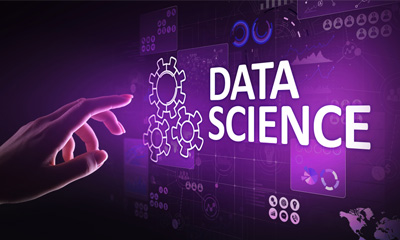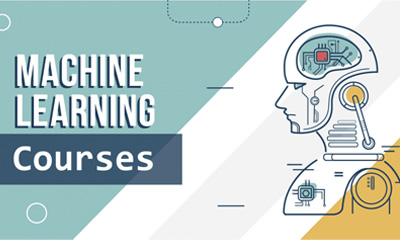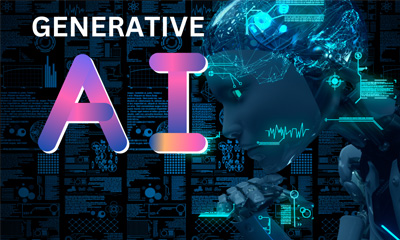Machine Learning
Machine Learning is a branch of artificial intelligence (AI) that enables systems to learn from data and improve over time without being explicitly programmed. It focuses on developing algorithms that can automatically learn patterns and make data-driven predictions or decisions.
Course Rating :
4.8 (926)

Course Overview
Machine Learning is a branch of artificial intelligence (AI) that enables systems to learn from data and improve over time without being explicitly programmed. It focuses on developing algorithms that can automatically learn patterns and make data-driven predictions or decisions. Machine Learning is widely used across various industries for tasks such as predictive analytics, pattern recognition, natural language processing, and computer vision
Key Points
In this course, you will learn how to:
- Understanding foundational concepts and algorithms of Machine Learning.
- Hands-on experience with real-world datasets and projects.
- Practical application of supervised and unsupervised learning techniques.
- Exploration of advanced topics like deep learning and reinforcement learning.
- Emphasis on model evaluation, validation, and optimization techniques.
- Insight into ethical considerations and best practices in Machine Learning.
Course Curriculum
Detailed Course Content Outline: Complete Machine Learning
Overview of Machine Learning
- Definition, History, and Evolution
- Types of Machine Learning: Supervised, Unsupervised, Reinforcement Learning
- Applications across Various Industries
Mathematical Foundations
- Linear Algebra:
- Vectors, Matrices, Matrix Operations
- Eigenvalues and Eigenvectors
Calculus:
- Derivatives, Gradients, Optimization Techniques
Probability Theory:
- Probability Distributions (Binomial, Normal, Poisson)
- Conditional Probability, Bayes' Theorem
Python Basics for Machine Learning
- Installation and Setup: Anaconda, Jupyter Notebooks
- Python Essentials:
- Variables, Data Types, Operators
- Control Flow: Loops, Conditional Statements
- Functions, Classes, Modules
- NumPy and SciPy for Scientific Computing:
- Arrays, Matrix Operations, Linear Algebra Functions
Data Collection and Cleaning
- Data Sources and Formats (CSV, JSON, SQL)
- Data Extraction Techniques
- Handling Missing Data:
- Imputation Methods (Mean, Median, Mode)
- Removing Outliers and Anomalies
Exploratory Data Analysis (EDA)
- Descriptive Statistics:
- Measures of Central Tendency, Dispersion
- Skewness, Kurtosis
- Data Visualization:
- Matplotlib for Basic Plots
- Seaborn for Statistical Visualizations
- Plotly for Interactive Visualizations
Feature Engineering
- Transforming Variables:
- Scaling, Normalization
- Log Transformation, Box-Cox Transformation
- Handling Categorical Data:
- One-Hot Encoding, Label Encoding
- Feature Selection Techniques:
- Correlation Matrix, Univariate Selection
- Recursive Feature Elimination (RFE), Principal Component Analysis (PCA)
Linear Models for Regression and Classification
- Linear Regression:
- Simple Linear Regression, Multiple Linear Regression
- Assumptions, Model Evaluation Metrics (R-squared, MAE, RMSE)
- Logistic Regression:
- Binary and Multiclass Classification
- Decision Boundaries, Probability Estimation
Non-linear Models
- Decision Trees:
- Tree Structure, Splitting Criteria (Gini Impurity, Information Gain)
- Ensemble Methods: Random Forests, Gradient Boosting Machines (GBM)
- Support Vector Machines (SVM):
- Linear SVM, Non-linear SVM (Kernel Tricks: Polynomial, RBF)
- Margin, Support Vectors
Nearest Neighbors Methods
- k-Nearest Neighbors (k-NN) Algorithm:
- Distance Metrics (Euclidean, Manhattan, Minkowski)
- Model Evaluation and Tuning
Clustering Algorithms
- K-Means Clustering:
- Algorithm Overview, Centroid Initialization
- Evaluating Cluster Quality (Inertia, Silhouette Score)
- Hierarchical Clustering:
- Agglomerative and Divisive Approaches
- Dendrogram Visualization, Cluster Heatmaps
Dimensionality Reduction Techniques
- Principal Component Analysis (PCA):
- Dimensionality Reduction, Eigenvalues, Eigenvectors
- PCA for Feature Extraction, Visualization
- Singular Value Decomposition (SVD):
- Matrix Factorization, Applications in Image Compression
Association Rule Learning
- Apriori Algorithm:
- Market Basket Analysis, Rule Generation
- Support, Confidence, and Lift Metrics
Model Performance Metrics
- Classification Metrics:
- Accuracy, Precision, Recall, F1-score
- ROC Curve, AUC (Area Under Curve)
- Regression Metrics:
- Mean Absolute Error (MAE), Mean Squared Error (MSE), R-squared
Cross-Validation Techniques
- k-fold Cross-Validation, Stratified Cross-Validation
- Time Series Cross-Validation, Leave-One-Out Cross-Validation
- Hyperparameter Tuning:
- Grid Search, Random Search
- Bayesian Optimization
Neural Networks Basics
- Artificial Neural Networks (ANNs):
- Perceptron, Activation Functions (ReLU, Sigmoid, Tanh)
- Backpropagation Algorithm
- Deep Learning Libraries:
- TensorFlow and Keras:
- Building Sequential and Functional Models
- Convolutional Neural Networks (CNNs) for Image Recognition
- TensorFlow and Keras:
- PyTorch:
- Tensor Basics, Autograd Mechanism
- Recurrent Neural Networks (RNNs) for Sequence Modeling
Natural Language Processing (NLP)
- Text Preprocessing Techniques:
- Tokenization, Stopword Removal, Stemming, Lemmatization
- Sentiment Analysis, Named Entity Recognition (NER)
- Word Embeddings:
- Word2Vec, GloVe, Embedding Layers in Neural Networks
Reinforcement Learning
- Markov Decision Processes (MDPs), Q-Learning
- Deep Q-Networks (DQNs) for Game Playing and Control Tasks
Big Data and Machine Learning
- Introduction to Distributed Computing:
- Apache Hadoop and HDFS
- Apache Spark: RDDs, DataFrames, Spark SQL
Ethics in Data Science
- Data Privacy and Security:
- GDPR, HIPAA Compliance
- Bias and Fairness in Machine Learning Models:
- Debiasing Techniques, Fairness Metrics
- Transparency and Interpretability of Models:
- Explainable AI (XAI) Techniques
Real-world Machine Learning Project
- Problem Formulation and Data Acquisition
- Data Exploration, Preprocessing, and Feature Engineering
- Model Selection, Training, and Evaluation
- Model Deployment, Presentation, and Documentation
Ethics in Data Science and Machine Learning
- Data Privacy and Security:
- GDPR, HIPAA Compliance
- Bias and Fairness in Machine Learning Models:
- Debiasing Techniques, Fairness Metrics
- Transparency and Interpretability of Models:
- Explainable AI (XAI) Techniques
Real-world Machine Learning Project
- Problem Formulation and Dataset Selection
- Data Exploration, Preprocessing, and Feature Engineering
- Model Selection, Training, and Evaluation
- Model Deployment, Presentation, and Documentation
Applications of Machine Learning in Various Industries
- Healthcare, Finance, E-commerce, IoT, etc.
- Case Studies:
- Predictive Maintenance in Manufacturing
- Fraud Detection in Banking
- Personalized Recommendations in E-commerce
Job Roles in Machine Learning
- Data Scientist, Machine Learning Engineer, AI Researcher, Data Analyst
- Building a Machine Learning Portfolio
- Showcasing Projects, GitHub Repositories
- Networking and Job Search Strategies
- Interview Preparation
- Technical and Behavioral Interview Questions
- Mock Interviews and Feedback Sessions
Learning Outcome
Upon completing a Machine Learning course, participants can expect to achieve the following learning outcomes:
Following are the professionals who can advance in their career by learning Machine Learning Course training:
- Gain a solid understanding of Machine Learning concepts, algorithms, and techniques.
- Develop practical skills in data preprocessing, feature engineering, and model building.
- Be proficient in implementing supervised and unsupervised learning algorithms.
- Acquire hands-on experience with popular Machine Learning libraries such as Scikit-Learn, TensorFlow, and PyTorch.
- Be able to evaluate, validate, and optimize Machine Learning models for performance.
- Build a portfolio of projects showcasing their Machine Learning expertise.
Who this course is for?
This Machine Learning course is designed for:
- Aspiring Data Scientists and Machine Learning Engineers looking to build a strong foundation in Machine Learning.
- Software Engineers transitioning into the field of AI and Machine Learning.
- Business Analysts and Decision Makers aiming to leverage data-driven insights.
- Professionals seeking to enhance their skills in predictive modeling and data analysis.
FAQs
Machine Learning is a subset of artificial intelligence (AI) that involves developing algorithms to enable systems to learn from data and make predictions or decisions without being explicitly programmed.
There are three main types of Machine Learning:
Supervised Learning: Learning from labeled data to predict outcomes.
Unsupervised Learning: Finding patterns and structures in unlabeled data.
Reinforcement Learning: Training models to make sequences of decisions.
Popular algorithms include:
Linear Regression, Logistic Regression
Decision Trees, Random Forests
Support Vector Machines (SVM)
k-Nearest Neighbors (k-NN)
Neural Networks (including Deep Learning architectures)
Python is the most widely used language due to its extensive libraries (such as NumPy, Pandas, Scikit-Learn, TensorFlow, and PyTorch) and ease of use in data manipulation, modeling, and visualization.
Prerequisites typically include:
Basic programming skills (especially in Python)
Understanding of fundamental mathematics (linear algebra, calculus, probability)
Familiarity with data manipulation and analysis using libraries like NumPy and Pandas.
Models are evaluated using various metrics:
Classification: Accuracy, Precision, Recall, F1-score, ROC AUC
Regression: Mean Absolute Error (MAE), Mean Squared Error (MSE), R-squared
Cross-validation techniques and confusion matrices are also commonly used.
Ethical concerns include:
Bias and fairness in algorithms
Privacy and security of data
Transparency and interpretability of models
Impact on society and decision-making
Machine Learning is applied in:
Healthcare (diagnosis, personalized treatment)
Finance (fraud detection, risk assessment)
E-commerce (recommendation systems)
Autonomous vehicles, natural language processing, and many other fields.
Career roles include:
Data Scientist
Machine Learning Engineer
AI Researcher
Data Analyst
These roles are in demand across industries seeking to leverage data for strategic decision-making.
Start with online courses, tutorials, and hands-on projects to build foundational knowledge and practical skills. Joining communities, participating in hackathons, and working on open-source projects can also provide valuable experience.
Certifications
Here are some recognized certifications in Machine Learning
- Microsoft Certified: Azure AI Engineer Associate
- IBM: Data Science Professional Certificate
- Google: TensorFlow Developer Certificate
- AWS Certified Machine Learning – Specialty
- SAS Certified Specialist: Machine Learning Using SAS Viya 3.4
- Cloudera Certified Associate: Data Analyst
- Databricks Certified Associate Developer for Apache Spark
- CompTIA Machine Learning Engineer Certification
These certifications validate your expertise and proficiency in Machine Learning techniques, tools, and platforms, enhancing your credibility in the field
Enroll Free Demo Class
Have Any Questions ?
- 521 Dyson Rd HainesCity FL 33844
- info@rbcloudgenx.com
- +1 8043007153
Prerequisites
Here are the prerequisites for a Machine Learning course:
- Basic programming knowledge in Python (variables, data types, loops, functions).
- Familiarity with fundamental mathematics and statistics concepts (linear algebra, calculus, probability).
- Understanding of data manipulation and analysis using libraries such as NumPy and Pandas.
- Curiosity and enthusiasm to learn new concepts and apply them to real-world problems.
Our Other Courses
Data Science is an interdisciplinary field that combines statistical analysis, machine learning, and domain expertise to extract insights from data.
Machine Learning is a branch of artificial intelligence (AI) that enables systems to learn from data and improve over time without being explicitly programmed.
The Artificial Intelligence (AI) course is designed to provide a comprehensive introduction to the concepts, techniques, and applications of AI.
This comprehensive Generative AI course is designed to empower participants with the knowledge and skills to harness the power of artificial creativity.
Rate This Course !
Click on a star to rate it!
Average rating 4.5 / 5. Vote count: 2
No votes so far! Be the first to rate this post.





